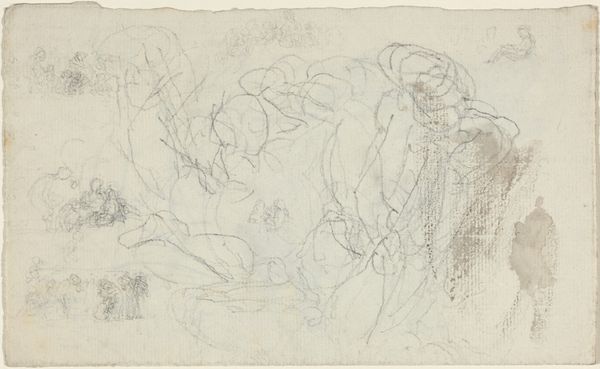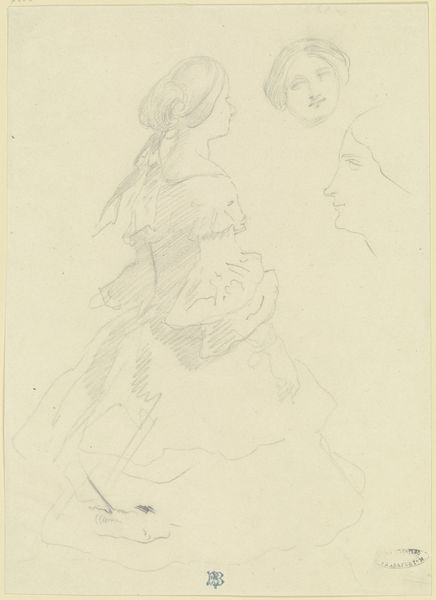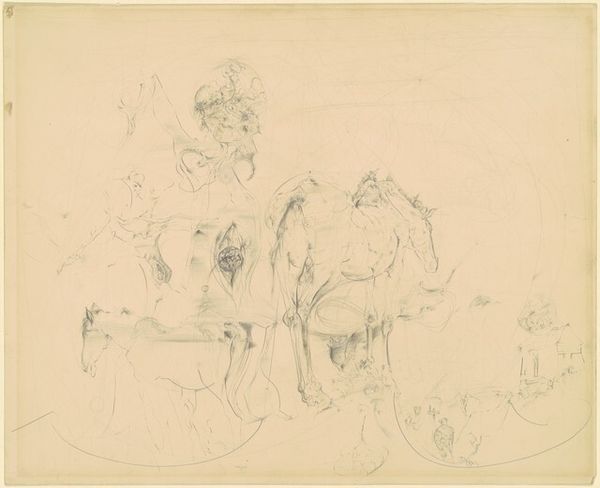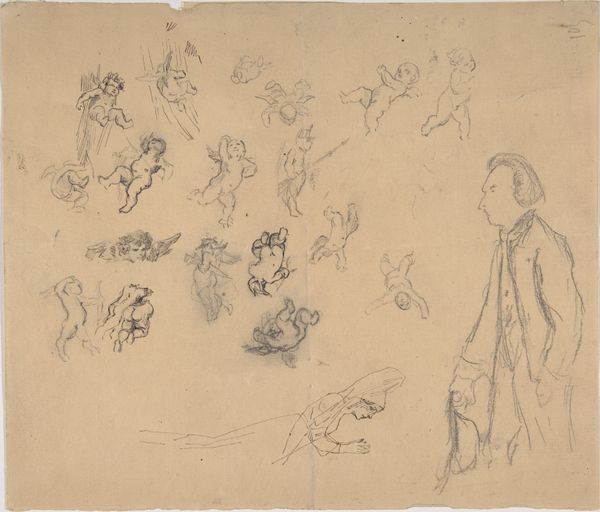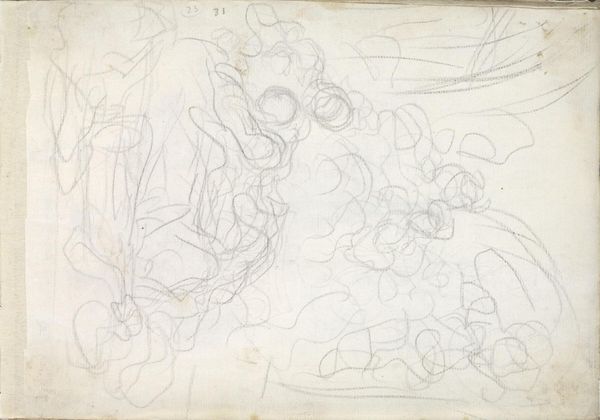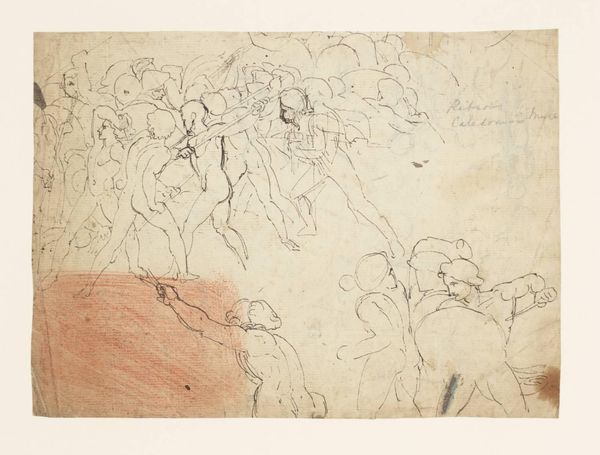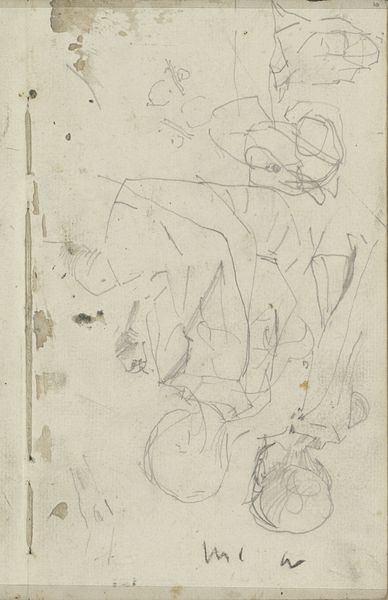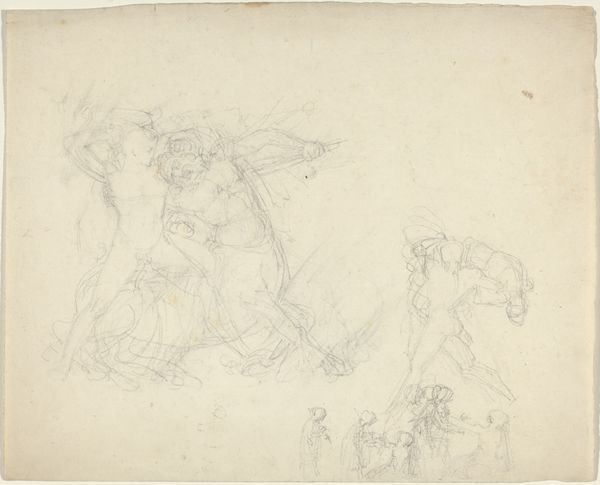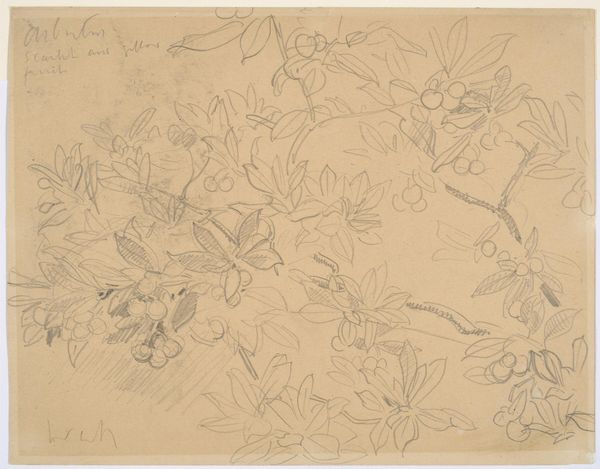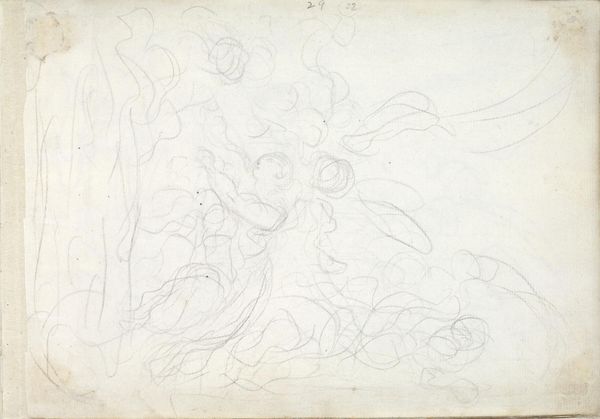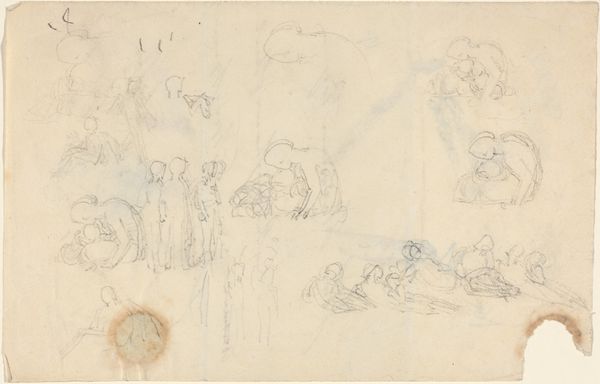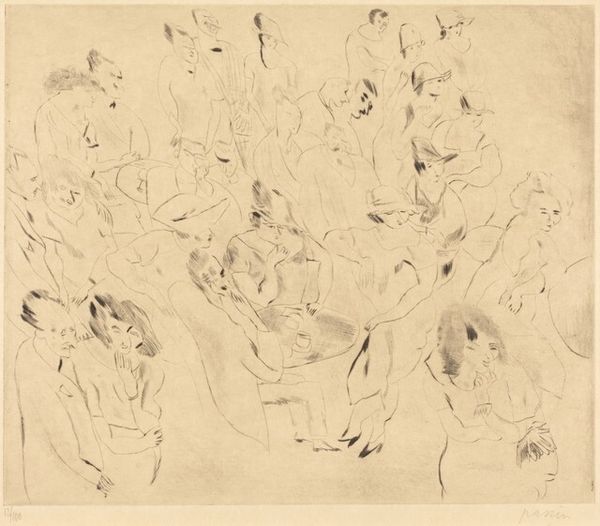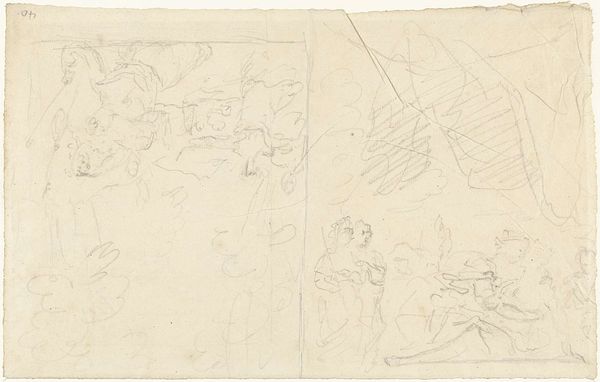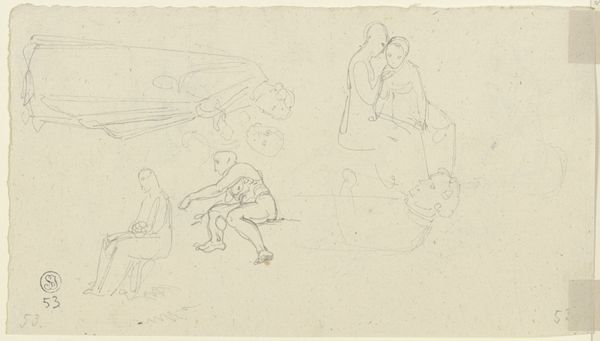![Sheet of Studies [recto and verso] by John Flaxman](/_next/image?url=https%3A%2F%2Fd2w8kbdekdi1gv.cloudfront.net%2FeyJidWNrZXQiOiAiYXJ0ZXJhLWltYWdlcy1idWNrZXQiLCAia2V5IjogImFydHdvcmtzL2EzODZlNjc0LThlZTUtNGMxMy1hYzJmLWRmODllZGIwNTE1NC9hMzg2ZTY3NC04ZWU1LTRjMTMtYWMyZi1kZjg5ZWRiMDUxNTRfZnVsbC5qcGciLCAiZWRpdHMiOiB7InJlc2l6ZSI6IHsid2lkdGgiOiAxOTIwLCAiaGVpZ2h0IjogMTkyMCwgImZpdCI6ICJpbnNpZGUifX19&w=3840&q=75)
drawing, pencil
#
drawing
#
figuration
#
pencil
Dimensions: overall: 11.9 x 19.3 cm (4 11/16 x 7 5/8 in.)
Copyright: National Gallery of Art: CC0 1.0
Curator: Here we have John Flaxman’s "Sheet of Studies," executed in pencil. It seems to contain multiple sketches on the same page. Editor: It gives off an ethereal impression, almost ghostly. The pencil work is so delicate, hovering on the paper. Is that even the right term, pencil work? Does drawing count as 'work' like, say, building furniture does? Curator: Absolutely! The 'work' lies in the deliberate act of applying material—here, graphite—to a surface to achieve a desired visual outcome. Look at how these pencil lines build complex figural forms from seemingly simple scribbles! Editor: You're right, they're figural, definitely classical. I notice recurring motifs—draped figures, seated poses, those garlands overhead. There is a lot of repetition there. Any thoughts on Flaxman's inspiration or intention? Curator: The drawings suggest Flaxman engaged in iterative design or even simple material constraint. Perhaps he wanted to keep to one piece of paper because paper production can involve significant industrial processes—wood pulp treatment, chemical bleaching... Maybe those classical motifs are echoes of prior assignments, reusing known themes to use less material. Editor: Perhaps so. Although those motifs… They suggest stories—narratives drawn from mythology or religious lore. I mean, a figure holding a hammer, isn’t it a clear symbolic reference to craftsmanship? I imagine stories embedded in the imagery, stories of labor, maybe even of gods involved in crafting. Curator: Or it shows his working methods; perhaps the figures are simply motifs used again and again because they resonated for buyers of sculpture and the burgeoning mass art market that existed then, for prints and ceramics etc. The 'god' of the market rules even artists! Editor: Fair enough. There's a fascinating interplay between intent and reception. A figure holding a hammer might be associated with craftsmanship, yet when multiplied by marketplace values it morphs. Still, it carries symbolic weight regardless of what somebody purchases at market. Curator: So you would agree that images always speak louder than money? I disagree because if this 'hammer figure' was popular it became just a pattern. Let's consider the economics; such drawings allowed efficient production of designs to then generate profit by whatever production method existed. That drives intention just as strongly. Editor: Indeed. Whether artistic inspiration stems from divine muse or the cold demands of the market, both factors have impact! Thank you. Curator: It’s an intersection of practice and value; the beauty lies there!
Comments
No comments
Be the first to comment and join the conversation on the ultimate creative platform.
